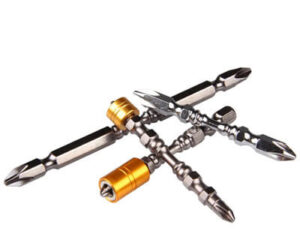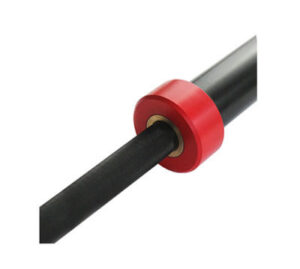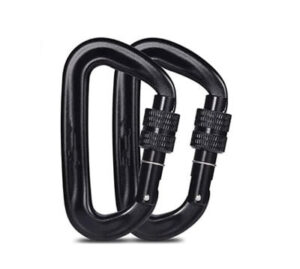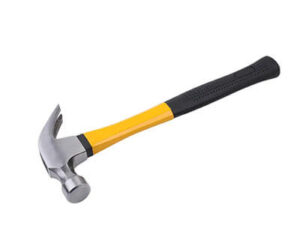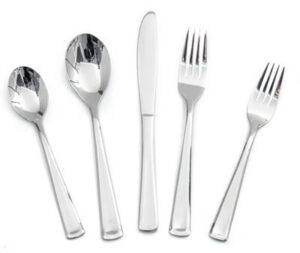As a popular production method, forging has been used for centuries to produce metal tools, weapons, and daily products. They often feature high strength and durability. So today let’s explore the nature of forging, helping your business stay forged for success.
What does forging mean?
Forging is a manufacturing process for shaping metals through hammering, pressing, or rolling. It can also be described as the procedure of heating, forcibly deforming, and finishing a piece of metal. When using heat for forging, it requires the temperature must be above its recrystallization point. And that is different for each type of metal. For example, steel can be forged at temperatures between 843℃ and 1232℃.
The purpose of forging is to improve the mechanical properties of the material, such as strength, toughness, and durability. Compared to other manufacturing processes like die casting, forging can make the strongest product because it can seal minor cracks and fill any empty spaces in the metal. The hot forging process can also break down impurities in the metal and reduce inclusions in the forged components.
Forging is a versatile method that can shape both small and big things. It makes not only parts for planes, cars, and other vehicles, but also hand tools like chisels, rivets, screws, and bolts stronger. In addition, many sports equipment also apply forging techniques, such as golf clubs, barbells, and mountaineering hooks, etc.
Different types of forging
There are several forging methods with different capabilities and benefits. The more commonly used forging methods include:
Cold forging
Cold forging typically refers to the process of forging metal at or slightly above room temperature. It involves various forging techniques such as bending, extruding, cold drawing, coining, and cold heading.
The advantages of cold forging include reducing the number of processing steps for finished parts, enhancing surface smoothness, improving dimensional stability, and lowering costs. Cold forging is often preferred for shaping soft metals like aluminum and copper.
However, this increased versatility comes at a cost, because cold forging requires more powerful equipment and may call for the use of intermediate anneals.
Hot forging
Hot forging requires heating the metal to near its melting point, then applying pressure to deform it into the desired shape. This approach is more energy-efficient as the heat slightly softens the metal to increase its flexibility. Additionally, while the metal is heated, any irregularities in its composition are smoothed out.
However, compared to cold forging, it falls slightly short in terms of size control, product uniformity, and surface smoothness. For a clearer understanding, you can check the video.
Drop forging
The name comes from the process of dropping a hammer onto the metal to mold it into the shape of the die, which is the surface that comes into contact with the metal. The die is usually flat, and some have unique shapes for special tasks. There are two types of drop forging: open-die and closed-die forging.
Closed die forging
Closed die forging, also known as impression die forging, is the process through the application of pressure within a closed set of molds. In this process, the metal is heated to a specific temperature, placed between two or more die halves, and then compressed using a mechanical press or hammer. The dies have cavities or impressions that define the desired shape of the final product.
You can check the video to see how it makes a tool.
Open die forging
Open die forging is also known as free forging or hand forging. The metal needs to be heated up first and then shaped to the desired form by pounding. It doesn’t need to be put all the way inside a mold. Compared to other methods, it could produce a finer grain size. In this mode, the limitations imposed by mold on metal forming are smaller, but the difficulty is higher. So it poses higher requirements for the operators.
Here is a video to show how it works.
Roll forging
Roll forging involves taking flat bars and passing them between two rotating cylinder rolls. These rolls apply pressure as they turn, shaping the metal by making it thinner and increasing its diameter. The shape and dimensions of the part are determined by geometric shapes that have been cut into the rolls. This method is often used to create long rods or tubes with intricate shapes. Check the video to see the roll-forging method.
Press forging
Press forging applies a steady and gradual force, unlike the quick impact of drop-hammer forging. The slower motion allows the metal to deform more deeply, so that the entire volume of the metal is uniformly affected. Compared to drop-hammer forging, the compression rate can be adjusted to manage the internal strain, not limited to the surface.
Here is a video to show you how it works.
What is the forging process?
Though forging has different types to choose from, it mainly involves the following process.
Material selection
It relies on the specific qualities you want in the end product. This is because different metals have distinct characteristics in terms of weight, tensile strength, and deformability. Nearly every type of metal can be forged. Typical metals utilized encompass steel, aluminum, copper, titanium, and their alloys.
Heating
Heavier metals require high-temperature heat treatment before forging, while softer metals such as aluminum, brass, and copper can be cold-forged at lower temperatures. Heating can be done in a furnace or by other heating methods. And during the heating process, it is common to clean the metal surface regularly to remove impurities or oxides. It helps ensure that the metal can achieve the desired performance and quality standards during the forging process.
Shaping
This happens in forging equipment. The process includes hammering, grinding, compressing, and bending. It is mainly achieved by applying pressure for open forging or using molds for forging, to achieve the desired shape and mechanical properties.
Cooling and heat treatment
After shaping the metal into the desired form, it needs to be slowly cooled down in order to stabilize its microscopic structure and reduce internal stresses. Depending on specific requirements, additional heat treatments such as annealing, quenching, and tempering can also be performed to optimize the material’s performance.
Post-processing
When all processing is done, it is usually necessary to remove excess material from the forged parts or perform other precision machining operations, such as making the surface smoother.
As a leading sourcing company in China, Jingsourcing has helped lots of clients source and customize metal products with different forging methods. Or you can tell us your ideas, then our experienced agent will offer you professional suggestions, saving you time and money.

